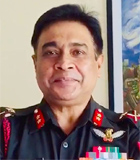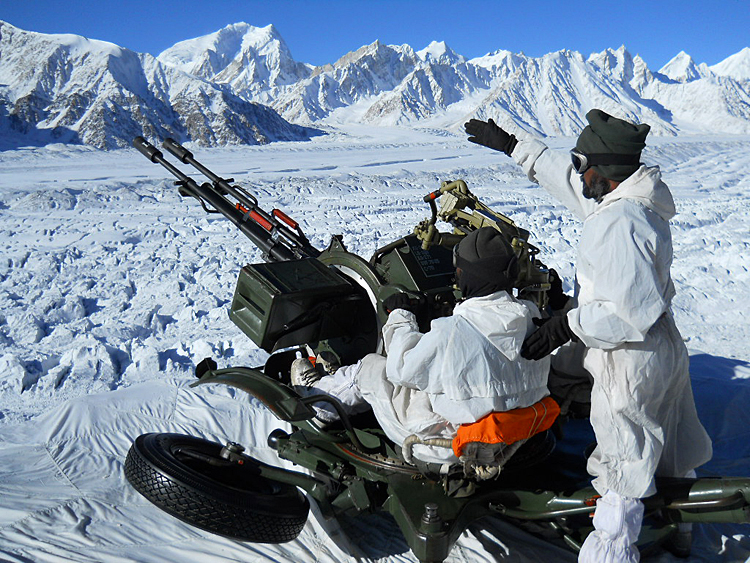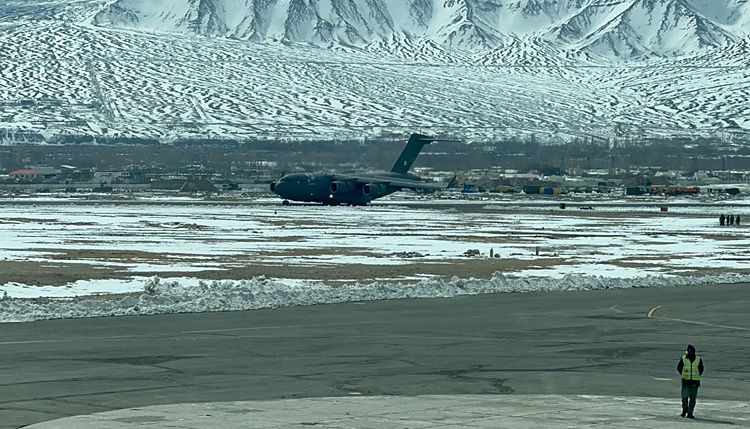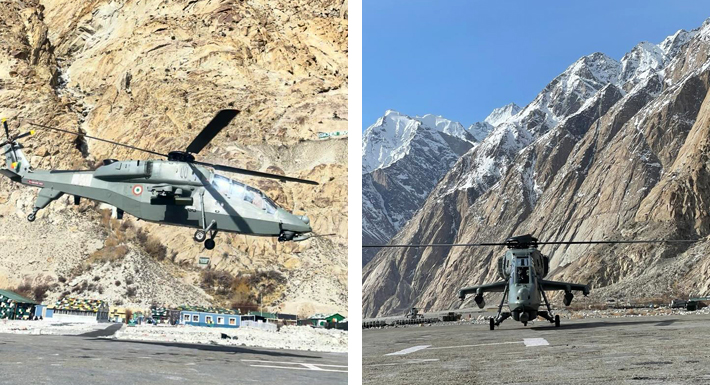INDIAN ARMED FORCES CHIEFS ON OUR RELENTLESS AND FOCUSED PUBLISHING EFFORTS

The insightful articles, inspiring narrations and analytical perspectives presented by the Editorial Team, establish an alluring connect with the reader. My compliments and best wishes to SP Guide Publications.

"Over the past 60 years, the growth of SP Guide Publications has mirrored the rising stature of Indian Navy. Its well-researched and informative magazines on Defence and Aerospace sector have served to shape an educated opinion of our military personnel, policy makers and the public alike. I wish SP's Publication team continued success, fair winds and following seas in all future endeavour!"

Since, its inception in 1964, SP Guide Publications has consistently demonstrated commitment to high-quality journalism in the aerospace and defence sectors, earning a well-deserved reputation as Asia's largest media house in this domain. I wish SP Guide Publications continued success in its pursuit of excellence.
- A leap in Indian aviation: Prime Minister Modi inaugurates Safran's Global MRO Hub in Hyderabad, Calls It a Milestone
- All about HAMMER Smart Precision Guided Weapon in India — “BEL-Safran Collaboration”
- India, Germany deepen defence ties as High Defence Committee charts ambitious plan
- True strategic autonomy will come only when our code is as indigenous as our hardware: Rajnath Singh
- EXCLUSIVE: Manish Kumar Jha speaks with Air Marshal Ashutosh Dixit, Chief of Integrated Defence Staff (CISC) at Headquarters, Integrated Defence Staff (IDS)
- Experts Speak: G20 Summit: A Sign of Global Fracture
World's Highest Battlefield: Siachen@40
Embracing the frozen frontier, Indian soldiers continue to control the world's highest and coldest battle ground through sheer courage and resilience
 |
The Author is former Chief of Staff of a frontline Corps in the North East and a former helicopter pilot. He earlier headed the China & neighbourhood desk at the Defence Intelligence Agency. He retired in July 2020 and held the appointment of Addl DG Information Systems at Army HQ. |

The cryptic transfer signal from the Army HQs was brutal to say the least. I had been based at Bagdogra (WB) for two years, flying in the treacherous heights of Himalayas in Sikkim. Then we had moved further east to Missamari (near Tezpur, Assam) along with my Army Aviation Flight to undertake many challenging missions under Operations Bajrang and Rhino when the ULFA and Bodo militants took to arms and fought a gruelling guerrilla war with the Indian state in the early nineties. Looking forward to some respite and a posting to a normal flying station with a reasonable social life, I found myself being assigned to Partapur, the helicopter base located in the Shyok Valley at 12,600 feet, for operations in the Siachen Glacier.
Embracing the Challenge
Out of concern, many fellow aviators advised sincerely that I should immediately represent against this transfer and that I would be fully justified to do so. But an inner voice whispered to me otherwise. Young, barely touching thirty, I thought this would be good opportunity do my service at the highest battlefield in the world. It would be an honour. What if another opportunity didn't come my way afterwards? Packing our household and shoving them into the luggage van of the Guwahati Trivandrum Express that would deliver them directly at Khurda Road (Jatni), we flew down to Bhubaneswar. For the next two years, while I was away in far-flung Siachen, my young family would spend some quality time with my parents, safe and secure.
The entire northern area, the region of the Karakoram, has names related to death. Now the silent soldiers of the Indian Army brave the elements to protect our frontiers.
After reporting at the N (Northern) Area Transit Camp located adjacent to the Chandigarh Air Force base, we boarded an IL-76 transport aircraft before crack of dawn. Two rows of canvas benches seated us alongside a pile of supplies, rations, spices and live chicken, the wide body workhorse being a lifeline that sustains operations and life in those remote forlorn heights across the Khardungla pass.

A short hour long eventless flight and we were disembarked at Thoise air force base. Looking around, it wasn't even what I had imagined. Arriving in November, the narrow desolate muddy brown sand desert valley had steep craggy snow-capped peaks on both sides. A short jeep ride on a narrow asphalt road led me to the aviation base at Partapur which essentially had a short runway with two hangars housing the helicopters. The modest accommodation consisted of two kerosene-bukhari-heated barracks that had walls and roofs fully constructed from tin sheets. There were no landline connections, only a dish antenna would give us grainy images of the happenings in the country and the outside world. A roadside cement signboard advised very sagely, "Don't be a Gama in the Land of Lama."
As the day progressed, the temperatures would rise and the helicopter load carrying capacity would drastically reduce. All flying activity had to cease by mid-day as it was dangerous to fly in turbulence due to differential heating of the steep mountain sides.
Shyok Valley, at an elevation of 10,500 ft, is the valley of the Shyok River. Rising from the Khumdang glacier, the Nubra and Changchenmo rivers fill the waters of Shyok river. The river flows westwards and meets the Indus in Baltistan. Shyok is a Yarkhand name and it also means the river of death, probably given by the Central Asian traders who ventured on this treacherous route for centuries and perished. Once upon a time, silk traders followed the Shyok River into Turkmenistan and beyond.


The entire northern area, the region of the Karakoram, has names related to death. It is evident that this was a part of the ancient trade route from Central Asia to Ladakh, where many died and only the hardiest survived. Now the silent soldiers of the Indian Army braved the elements to protect our frontiers.
It has been 40 years since April 13, 1984, when the Indian Army snatched control of the Siachen Glacier which is the world's highest & coldest battlefield
Over the next two years, we would get airborne at the crack of dawn after completing our metrology and air traffic briefings followed by the loads to be ferried for stocking and replenishment, troops induction schedules etc. As the day progressed, the temperatures would rise and the helicopter load carrying capacity would drastically reduce. All flying activity had to cease by mid-day as it was dangerous to fly in turbulence due to differential heating of the steep mountainsides.
The Unforgiving Siachen
It has been 40 years since April 13, 1984, when the Indian Army snatched control of the Siachen Glacier which is the world's highest & coldest battlefield, narrowly beating Pakistan. They brave the snow storms and blizzards stoically with courage and perseverance. Sometimes, as many as 6 soldiers at a time live in igloos made of fiberglass panels not bigger than the size of a king-size bed. The only way to keep themselves warm is through small kerosene stoves. Hot water bottles don't stay hot for long, sleeping doesn't happen at night. Since temperatures usually flowed below -50 °C, touching anything made of metal with bare hands cause severe frost bites within seconds. Guns and other weapons are only operated while wearing anti-frostbite gloves. Even the sweat in the gloves freeze to become ice, sometimes leading to finger amputations. Soldiers brought down to base camp often suffer problems of hearing, eyesight and memory loss because of prolonged use of oxygen masks. They can take bath only once in a month, using water from melting ice on stoves. Rifles are thawed repeatedly over kerosene stoves and machine guns are dipped in boiling water to keep them from jamming.

I got another opportunity to deploy in the Siachen Glacier in 2003-05, in command of an artillery regiment. There have been tremendous improvements in the logistics and infrastructure since. The development of an extensive network of tracks and the introduction of all-terrain vehicles (ATV) have significantly improved mobility across the glacier. ATV bridges have enabled the Army to overcome natural obstacles, while high-quality "Dyneema" ropes in aerial cableways ensure seamless supply lines to even the most-remote outposts. The induction of heavy-lift helicopters and logistic drones has vastly improved the supply of essentials to the personnel deployed in posts that are cut off, especially in winters. The availability of special clothing, mountaineering equipment and advanced rations has enhanced the ability of the soldiers to withstand the harsh conditions of the world's coldest battlefield. Ladakh is a brutal reminder that nature still reigns supreme.
Now, the availability of special clothing, mountaineering equipment and advanced rations has enhanced the ability of the soldiers to withstand the harsh conditions of the world's coldest battlefield.
To commemorate 40 years defending the Siachen, the Leh garrisoned Fire and Fury Corps which was raised after the Kargil war, very subtly put out, "Quartered in snow, silent to remain. When the bugle calls, they shall rise and march again."





